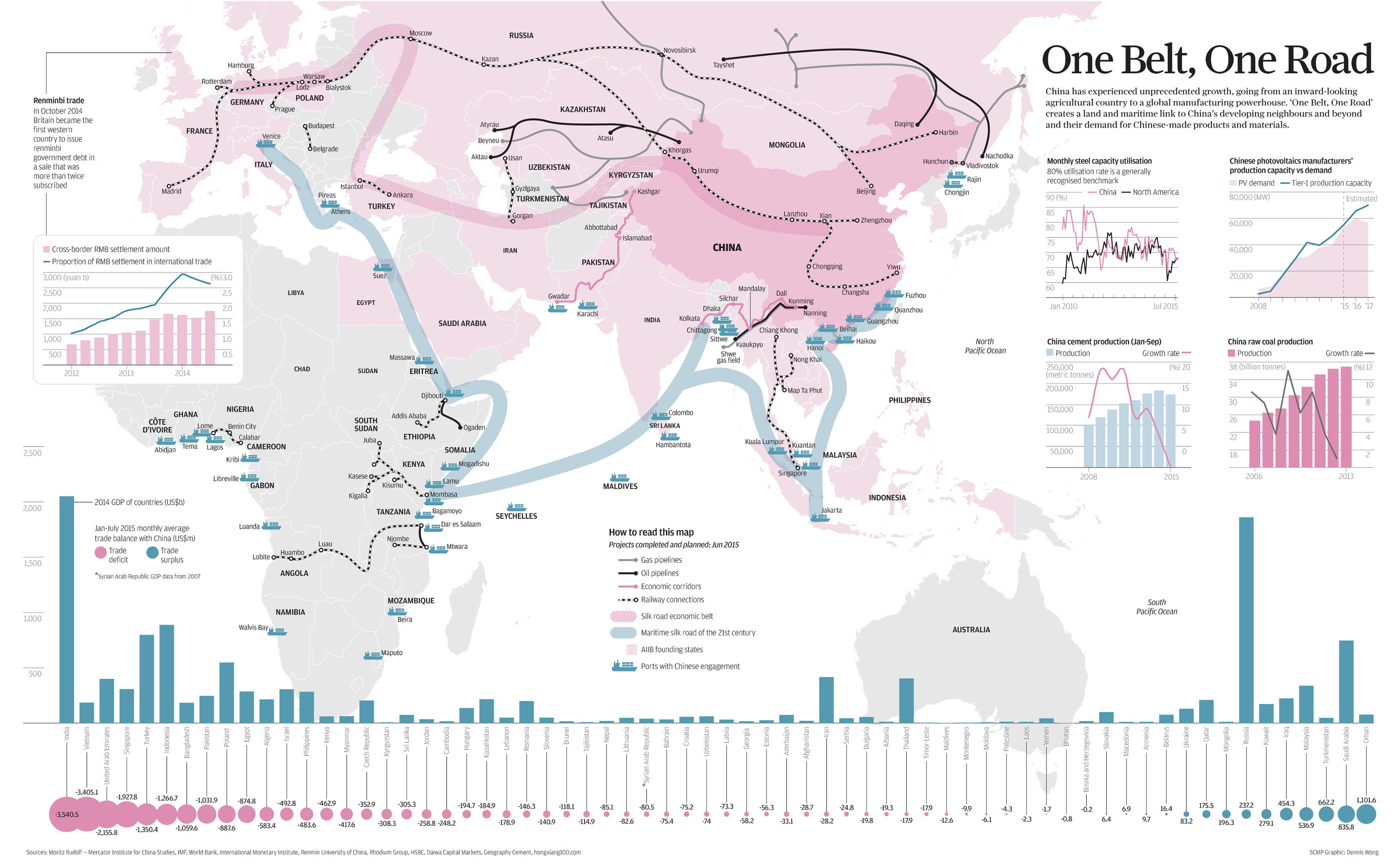Submitted by Taps Coogan on the 21th of December 2017 to The Sounding Line.
Enjoy The Sounding Line? Click here to subscribe for free.
Enjoy The Sounding Line? Click here to subscribe.
Many theories have been put forward to explain China’s ambitious ‘One Belt One Road’ program. The program, first announced by Chinese President Xi Jinping in 2013, has pledged and invested tens of billions of dollars worth of Chinese state and private sector money into infrastructure projects around the world.
 Ostensibly, the program is intended to serve a multitude of Chinese and regional interests: give China better access to European and Central Asian markets, provide investment and export opportunities for Chinese enterprises, better integrate other countries with China’s economy, and so forth. Along all of these lines, China is building ports, railway connections, pipelines, and other infrastructure projects in dozens of countries. However, as the following chart from Statista suggests, the real driving force behind China’s ‘One Belt, One Road’ program may be far more single minded than all of these lofty goals, namely Chinese energy security.
Ostensibly, the program is intended to serve a multitude of Chinese and regional interests: give China better access to European and Central Asian markets, provide investment and export opportunities for Chinese enterprises, better integrate other countries with China’s economy, and so forth. Along all of these lines, China is building ports, railway connections, pipelines, and other infrastructure projects in dozens of countries. However, as the following chart from Statista suggests, the real driving force behind China’s ‘One Belt, One Road’ program may be far more single minded than all of these lofty goals, namely Chinese energy security.
As Statista notes:
“In 2015, Chinese enterprises made direct investments in 49 countries related to “One Belt One Road”. As of December 2016, Chinese enterprises have established 56 economic and trade cooperation zones in 20 countries with a total investment of up to 18.5 billion U.S. dollars. With the support of the government, the initiative has greatly boosted the volume of overseas M&A deals. In terms of sectors, oil and gas are the major industries in China’s M&A activity among participating ‘One Belt One Road’ countries – with a total transaction volume of over 38 billion U.S. dollars in the past 12 years.”
 You will find more statistics at Statista
You will find more statistics at Statista
By a wide margin, China’s largest investments are in the oil and gas sectors, and the bulk of that money appears to be going to Russia and Pakistan. It’s probably not a coincidence that these two countries offer the critical land routes that China depends on for its oil and gas linkages to huge Russian and Middle Eastern energy reserves: land routes that are outside of the US geopolitical orbit and, being land routes, are resistant to naval blockade by the US’s vastly larger navy.
If you would like to be updated via email when we post a new article, please click here. It’s free and we won’t send any promotional materials.
Would you like to be notified when we publish a new article on The Sounding Line? Click here to subscribe for free.

